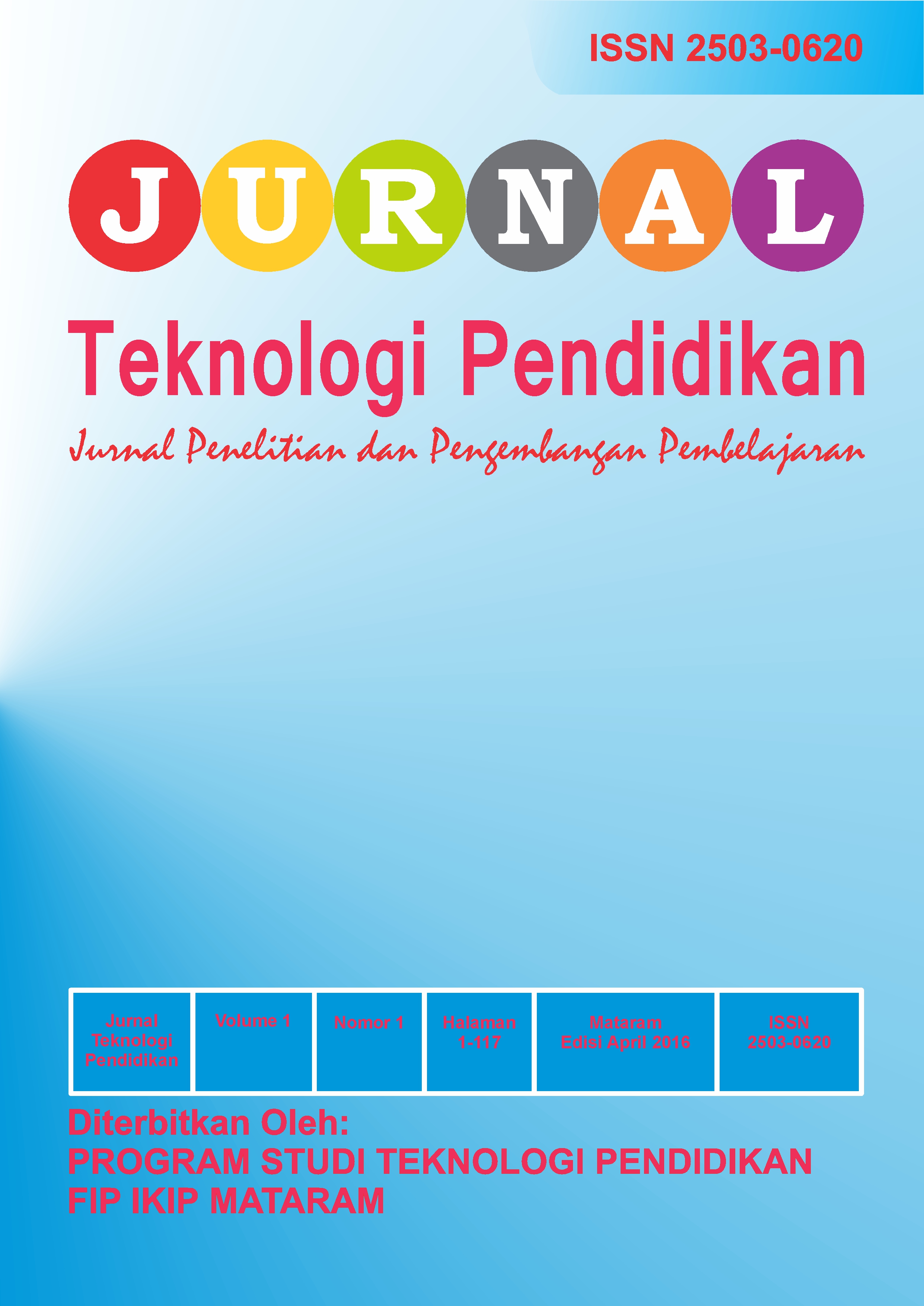PEMANFAATAN PUSAT SUMBER BELAJAR DALAM MENINGKATKAN HASIL BELAJAR
DOI:
https://doi.org/10.33394/jtp.v1i1.605Abstract
Learning Resource Centre has an important role in fostering quality learning outcomes. The learning process that occurs in the institutions of education and training is no longer possible to do with a lot of "feeding" the participants of his protégé. Learners must actively seeking information that is required, while the teacher (teacher or instructor) are obligated to give referrals, example and encouragement. In addition the demands will be the flexibility and leeway time and place to learn the longer. Information sources diversified need identified, prepared, developed, and utilized to facilitate the occurrence of the learning process. For that reason then organizing learning resources become large enough, especially in his position as a suport system in learning systems. Managing and organizing learning resources in an educational institution can be realized in the form of a learning resource center (PSB) with strategic measures in support of quality learning outcomes.
Keywords : Utilization, learning resources and Learning Center\
References
Association for Educational Comunication Technology (AECT), Definisi Teknologi Pendidikan (Penerjemah Yusufhadi Miarso), Jakarta: C.V. Rajawali (Buku asli diterbitkan tahun 1977), 1986.
Bloom, Benyamis S. , Taxonomy of Education Objectives. Handbook I: Cognitive Domain. New York: Longman, Inc., 1956.
De Porter, Bobbi and Hernacki, Mike, Quantum Learning. Bandung: Penerbit Kaifa, 2000.
Depdiknas, Kurikulum Berbasis Kompetensi. Jakarta: Puskur-Badan Litbang, 2001.
Dryden, Gordon and Vos, Jeannette, The Learning Revolution. New Zealand: The Learning Web., 1999.
Heinich, R., M. Molenda, J.D. Russell, dan S.E Smaldino, Instructional Media and Technologies for Learning. Englewood Cliffs, New Jersey: Merril-an imprint of Prentice Hall, 1996
Heinich, Robert, Molenda, Michael and Russell, James D., Instructional Media. New York: Macmillan Publishing Company, 1995.
Kemp, Jerold E., Planning & Producing Audio Visual Materials, New York : Thomas Y. Crowell, 1975
Lasa Hs., Manajemen Perpustakaan Sekolah. Yogyakarta : Pinus Book Publisher, 2007.
Mulyasa, Kurikulum Berbasis Kompetensi. Bandung: Remaja Rosdakarya, 2003.
Padmo, Dewi (Editor), Teknologi Pembelajaran. Jakarta: PAU-UT, 2003.
Percival, Fred & Henry Ellington, A Handbook of Educational Technology, Kogan Page Ltd, 120 Pentonville Road, London., 1980.
Plomp, Tjeerd dan Donald P.Ely (Editor), International Encyclopedia of Educational Technology, Second Edition, Cambridge,UK: Cambridge University Press, 1996
Robert M. Gagne, Kondisi belajar dan Teori pembelajaran, terjemahan Munandir (Holt, Rinehart and Winston digandakan oleh PAU-PPAI Universitas Terbuka,1990 )
Rose, Colin dan Nicholl, Malcolm J., Accelerated Learning. Bandung: Nuansa, 2002.
Sadiman, Arief S., Perpustakaan sebagai Pusat Sumber Belajar, dalam Buku Dinamika Informasi dalam EraGlobal. Bandung: Ikatan Pustakawan Indonesia, Jawa Barat. PT. Remaja Rosdakarya, 1998
Semiawan, Conny R, Perspektif Pendidikan Anak Bebakat. Jakarta: Grasindo, 1977.
Wina Sanjaya, Strategi Pembelajaran Berorientasi Standar proses Pendidikan (Jakarta: Kencana Pernada Media Group, 2006)
Yamin, Martinis, Strategi Pembelajaran Berbasis Kompetensi. Jakarta: Gaung Persada Press, 2003.
Downloads
Published
How to Cite
Issue
Section
License
License and Publishing Agreement
In submitting the manuscript to the journal, the authors certify that:
- They are authorized by their co-authors to enter into these arrangements.
- The work described has not been formally published before, except in the form of an abstract or as part of a published lecture, review, thesis, or overlay journal.
- That it is not under consideration for publication elsewhere,
- That its publication has been approved by all the author(s) and by the responsible authorities – tacitly or explicitly – of the institutes where the work has been carried out.
- They secure the right to reproduce any material that has already been published or copyrighted elsewhere.
- They agree to the following license and publishing agreement.
Copyright
- Authors who publish with JTP agree to the following terms:
- Authors retain copyright and grant the journal right of first publication with the work simultaneously licensed under a Creative Commons Attribution License (CC BY-SA 4.0) that allows others to share the work with an acknowledgment of the work's authorship and initial publication in this journal.
- Authors are able to enter into separate, additional contractual arrangements for the non-exclusive distribution of the journal's published version of the work (e.g., post it to an institutional repository or publish it in a book), with an acknowledgment of its initial publication in this journal.
- Authors are permitted and encouraged to post their work online (e.g., in institutional repositories or on their website) prior to and during the submission process, as it can lead to productive exchanges, as well as earlier and greater citation of published work.
- Licensing for Data Publication
Licensing for Data Publication
JTP use a variety of waivers and licenses, that are specifically designed for and appropriate for the treatment of data:
Open Data Commons Attribution License, http://www.opendatacommons.org/licenses/by/1.0/ (default)



.png)

